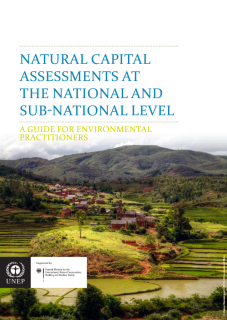
Overreliance on investment in the so-called ‘brown economy’ between the late 20th and early 21st centuries led to a state of financial imbalance and was a contributing factor in the global financial crises of 2008. An alternative economic paradigm, centred on a ‘greening’ of the economy, provides greater focus on investment in renewable energy, energy efficiency, public transportation, sustainable agriculture, ecosystem and biodiversity protection, and land and water conservation. These ‘green economies’ are also likely to be more resilient and socially inclusive, particularly in the face of environmental pressures, such as climate change.
Almost all economic activities are dependent on ‘natural capital’ in some form or another. Natural capital refers to the stocks of the Earth’s natural assets and resources, such as soil, water, air and biodiversity. These stocks provide humans with a flow of goods and benefits – known as ‘ecosystem services’ – which positively impact our well-being. Indeed, for business operations to successfully function long-term, and for human well-being to be sustained, this resource base must be maintained or restored. This is a fundamental part of the greening of economies.
Economic growth in Africa is typically underpinned by dependencies on natural resource exploitation. In order to realise sustainable long-term growth, African economies will need to adapt and shift towards adopting the green economy concept. This transition is vital for contributing to poverty eradication, sustained economic growth, enhanced social inclusion, improved human welfare and increased employment opportunities, while maintaining and sustaining healthy ecosystem functioning.
